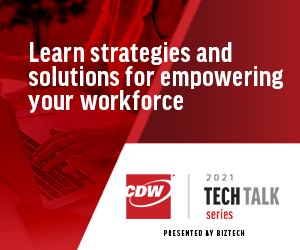Think Holistically About the Onboarding Process
Getting a new employee started often involves throwing a lot of information at them in a short amount of time — information that may not be easy to parse. But a careful hand can help significantly in easing new employees on board. Offering basics such as the employee handbook, a training calendar and access to technology tools (and their associated logins) are to be expected, but there are other tools needed in a remote environment. Video chats with members of the leadership team, for example, can help give employees a sense of their role in the company. Onboarding shouldn’t be just giving them information, but also helping them see the full picture.
Consider Onboarding Logistics for Remote Hires
Getting the necessary equipment out to a new employee can be as easy as drop-shipping a machine to a new employee overnight. But let’s be realistic: Things happen, and remote employees might find themselves without the equipment they need when they first start. One effective way to deal with this issue is to have employees access a virtual desktop through a tool such as Citrix, which would allow them to access work using their home computer while waiting for more secure work tools. You may need to ask your help desk to accommodate the unusual situation, but as remote onboarding increases, odds are that, based on your remote hiring needs, it might become a bit less unusual.
Offer Training Options for Hybrid Workers
With people working outside the office, you can’t just pull a group of people into a meeting room to teach them how to do something. Instead, you’ll need more visual and possibly even interactive training options. Using tools such as Microsoft PowerPoint or even recording basic training videos can be a good start, but the power of videoconferencing creates a lot of opportunities to reach new employees more effectively. Using tools such as Cisco Webex — which recently integrated Slido, a polling and quizzing tool, into its software — or Zoom can create opportunities to do more with training than just give users a list of instructions that they may struggle to remember. Another strategy might be to create an “adoption service,” in which a more seasoned employee works closely with a new hire to help get them up to speed.
Get Feedback from New Employees
Remote onboarding is likely still a new process for your business, and it’s important to have an understanding of what’s working and what’s not. Giving new workers a survey about 60 to 90 days into their tenure can be very informative, allowing you to make improvements over time. Not only does it offer fresh data points that your organization can analyze as it improves its onboarding processes, it can help new employees feel that their feedback and concerns are being heard, which is important for morale.
Understand IT’s Role in Onboarding
A good employee onboarding process brings together parts of the entire organization so that new employees get a feel for the company and can make an impact in the most effective way possible. The IT department is a big part of that, even if the role they play isn’t obvious at first.
In many ways, the customers of the IT team are the organization’s different lines of business, and the IT department is at their service. This is especially true when it comes to making an employee’s experience of the first few days as painless as possible, and making sure the long-term integration is effective.
Given that so much of this process will happen over digital channels — through video, on internal networking platforms such as Microsoft Teams, and through other collaboration tools — it’s clear that the IT team will play an important role with onboarding, orchestrating a process that could help determine whether an employee excels or struggles.
Making it easy for employees to access the information they need, as well as the technical tools that make their work possible, is one thing; enabling other departments to have the resources to excel with their own onboarding processes is going above and beyond.
With the right resources and strategy, you can help turn your small business’s remote onboarding process into something it can be proud of.
This article is part of BizTech's AgilITy blog series. Please join the discussion on Twitter by using the #SmallBizIT hashtag.












